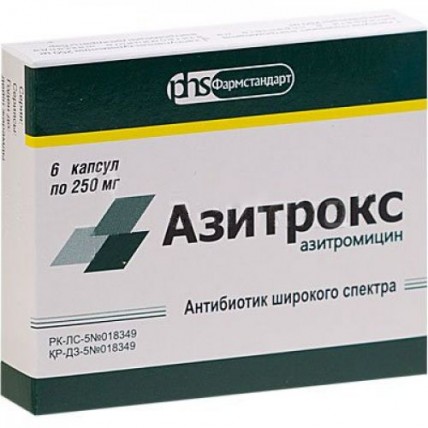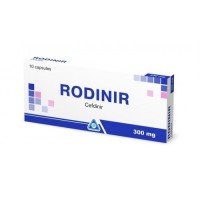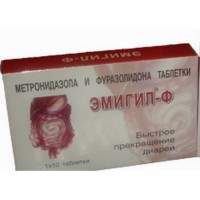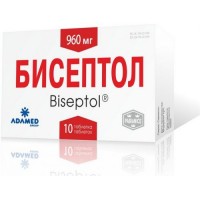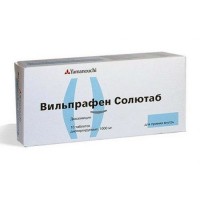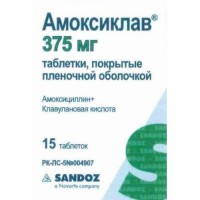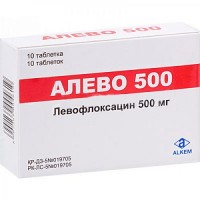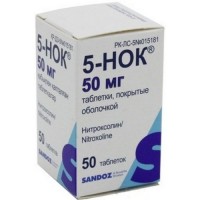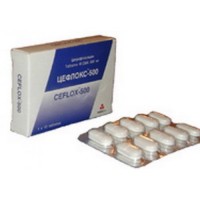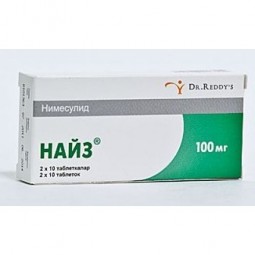Azitrox 250 mg (6 capsules)
- $13.50
Out Of Stock
The instruction for medical use of medicine Azitrox the Trade name Azitrox the International unlicensed name Azithromycin Dosage Form mg Capsules 250 and 500 Structure One capsule contains active agent: azithromycin a dihydrate (in terms of azithromycin) mg 250 or 500, excipients: Mannitolum (mannitol), starch corn, magnesium stearate, sodium lauryl sulfate, structure of capsules of firm gelatinous No. 0 (for a dosage of 250 mg): the body and a lid of of the titan dioxide (E 171), gelatin (gelatin medical), Structure of capsules of firm gelatinous No. 00 (for a dosage of 500 mg): the body of the titan dioxide (E 171), gelatin medical, a lid of of the titan dioxide (E 171), dye quinolinic yellow (E 104), dye a sunset yellow (E110), gelatin medical, or Structure of capsules of firm gelatinous No. 00 (for a dosage of 500 mg): body and lid of of the titan dioxide (E 171), gelatin medical, dye quinolinic yellow (E 104), dye sunset yellow (E110) Description of the Capsule of white color No. 0. Contents of capsules – powder of color, white or white with a yellowish shade (for a dosage of 250 mg) Capsules firm gelatinous No. 00, the body – white color, a cover – yellow color. Contents of capsules – powder of color, white or white with a yellowish shade (for a dosage of 500 mg) Pharmacotherapeutic group Antimicrobial drugs for system use. Macroleads. Azithromycin. The ATX J01FA10 code the Pharmacological Pharmacokinetics Azithromycin properties is quickly soaked up from digestive tract that is caused by its stability in acidic environment and lipophilicity. After intake of 500 mg the maximum concentration of azithromycin in blood plasma is reached in 2.5 - 3.0 h and makes 0.4 mg/l. The bioavailability is 37%. Azithromycin well gets into airways, bodies and fabrics of an urogenital highway (in particular in a prostate), in skin and soft tissues. High concentration in fabrics (is 10-50 times higher, than in blood plasma) and long elimination half-life are caused by low linking of azithromycin with proteins of blood plasma and also its ability to get into eukaryotic cells and to concentrate in the environment with a low rn, a surrounding lysosome. It, in turn, determines the large seeming distribution volume (31.1 l/kg) and high plasma clearance. The ability of azithromycin to collect mainly in lysosomes is especially important for elimination of intracellular activators. It is proved that phagocytes deliver azithromycin to places of localization of an infection where it is released in the course of phagocytosis. Concentration of azithromycin in the centers of an infection it is reliable above, than in healthy fabrics (on average for 24-34%) and correlates with degree of inflammatory hypostasis. Despite high concentration in phagocytes, azithromycin has no significant effect on their function. Azithromycin remains in bactericidal concentration within 5-7 days after reception of the last dose that allowedshort (3-day and 5-day) courses of treatment. In a liver it demetilirutsya, the formed metabolites are not active. Removal of azithromycin from blood plasma takes place in 2 stages: elimination half-life makes 14-20 h in the range from 8 up to 24 h after administration of drug and 41 h in the range from 24 up to 72 h that allows to use drug of 1 times/days. Azithromycin is removed, generally in an invariable look – 50% by intestines, 12% kidneys. Pharmacodynamics Antibiotic of a broad spectrum of activity. Is the representative of subgroup of makrolidny antibiotics of of azaleads. Contacting 50S a subunit of ribosomes, oppresses to a peptidtranslokaz at a broadcasting stage, suppresses protein synthesis, slows down growth and reproduction of bacteria, works bacteriostatically, in high concentrations renders bactericidal effect. Works on out of - and intracellular activators. It is active concerning gram-positive aerobic microorganisms: Streptococcus spp. (A, B, C groups, G), Streptococcus pneumoniae (penitsillinchuvstvitelny), Streptococcus pyogenes, Staphylococcus aureus (metitsillinchuvstvsitelny), gram-negative aerobic microorganisms: Haemophilus influenzae, Haemophilus parainfluenzae, Moraxella catarrhalis, Legionella pneumophila, Neisseria gonorrhoeae, Pasteurella multocida, some anaerobic organisms: Prevotella spp., Clostridium perfringens, Fusobacterium spp., Porphyriomonas spp. and also Chlamydia trachomatis, Chlamydia pneumoniae, Chlamydia psittaci, Mycoplasma pneumoniae, Mycoplasma hominis, Borrelia burgdorferi. The microorganisms capableazithromycin resistance: gram-positive aerobes (Streptococcus pneumoniae (penitsillinustoychivy)). Initially steady microorganisms: gram-positive aerobes (Enterococcus faecalis, Staphylococcus spp. (metitsillinustoychivy staphylococcus show very high degree of resistance to macroleads), the gram-positive bacteria resistant to erythromycin), anaerobe bacterias (Bacteroides fragilis). Indications the Infectious and inflammatory diseases caused by microorganisms, sensitive to azithromycin, including: - infections of upper parts of airways and ENT organs (tonsillitis, sinusitis, tonsillitis, pharyngitis, average otitis) - scarlet fever - infections of lower parts of airways (including caused by atypical activators) - infections of skin and soft tissues (the ugly face, impetigo which are again infected a dermatosis) - infections of an urogenital path (including an urethritis and/or a cervicitis) - a disease Laima (borreliosis), for treatment of an initial stage (erythema migrans) - the diseases of a stomach and a duodenum associated with Helicobacter pylori (as a part of combination therapy). A route of administration and doses Inside, for 1 h to or in 2 h after a meal of 1 times a day. ADULT: In infections of upper and lower parts of airways – 500 mg/days for 1 reception within 3 days (a course dose – 1.5 g). In infections of skin and soft tissues – 1000 mg/days in the first day for 1 reception, further on 500 mg/days daily from 2 to 5 day (a course dose – 3 g). In acute infections of urinogenital bodies (uncomplicated urethritis or a cervicitis) – once 1 g. At complicated, it is long the proceeding urethritis/cervicitis caused by Chlamydia trachomatis – on 1 g three times at an interval of 7 days (administration of drug in 1-7-14 day of treatment). A course dose – 3 g. In a disease Laima (borreliosis) for treatment of the I stage (erythema migrans) – 1 g in the first day and 500 mg daily from 2 to 5 day (a course dose – 3 g). In a peptic ulcer of a stomach and the duodenum associated with Helicobacter pylori – 1 g/days within 3 days as a part of the combined antikhelikobakterny therapy. To CHILDREN with the body weight from 25 to 45 kg at: - infections of upper and lower airways, skin and soft tissues, scarlet fever of 250 mg/days within 3 days - treatment of erythema migrans – 500 mg (2 capsules on 250 mg) in the first day and 250 mg daily from 2 to 5 day (a course dose – 1.5 g) to CHILDREN with body weight more than 45 kg at: - infections of upper and lower airways, skin and soft tissues, scarlet fever – 500 mg (2 capsules on 250 mg) in day for 1 reception within 3 days - treatment of erythema migrans – 1 g (4 capsules on 250 mg) in the first day and 500 mg (2 capsules on 250 mg) daily from 2 to 5 day (a course dose – 3 g) For patients with a renal failure (clearance of creatinine more than 40 ml/min.) correction of the mode of dosing is not required. Side effects Classification of frequency of development of side effects (WHO): very often (with a frequency more than 1/10), it is frequent (with a frequency not less than 1/100, but less than 1/10), infrequently (with a frequency not less than 1/1000, but less than 1/100), is rare (with a frequency not less than 1/10000, but less than 1/1000), is very rare (with a frequency less than 1/10000), (including separate messages). Often - a lymphocytopenia, an eosinophilia - dizziness, a headache, paresthesia, disturbance of perception of flavoring feelings Infrequently - uneasiness, nervousness, a giposteziya, insomnia, drowsiness - decrease in auditory acuity, sonitus - heart consciousness - a leukopenia, a neutropenia - gastritis, a constipation, a melena, anorexia - hepatitis, a hyperbilirubinemia, increase in activity of "hepatic" transaminases - Stephens-Johnson's syndrome, a photosensitization, a small tortoiseshell - increase in residual nitrogen of urea and concentration of creatinine in blood plasma is rare - decrease in visual acuity, deafness - a lowering of arterial pressure - agitation Very seldom - thrombocytopenia, hemolytic anemia - arrhythmia, including: ventricular tachycardia, increase in an interval Q-T, arrhythmia like "pirouette" - nausea, diarrhea, an abdominal pain, a meteorism, vomiting - cholestatic jaundice, a liver failure - discoloration of language, pseudomembranous colitis, pancreatitis - fulminantny hepatitis, liver necrosis - an itching, rash - an arthralgia - anaphylactic reactions (including a Quincke's disease) in rare instances from the death, a toxic epidermal necrolysis, a multiformny erythema - interstitial nephrite, an acute renal failure - faints, spasms, psychomotor hyperactivity, an anosmia, loss of flavoring feelings, a parosmiya, aggravation of a myasthenia gravis - vertigo Other: often – weakness, infrequently – a stethalgia, peripheral hypostases, an asthenia, a hyperglycemia, conjunctivitis of the Infection and an invasion: infrequently – a vaginitis, candidiasis of various localizations. It is necessary to report about emergence of any side effect to the attending physician. contraindications hypersensitivity to azithromycin (including to other macroleads), to drug components a heavy liver failure: more than 9 points on a scale of Chayld-Pyyu (there are no data on efficiency and safety) a heavy renal failure: the clearance of creatinine (CC) less than 40 ml/min. (there are no data on efficiency and safety) children's age up to 18 years (at reception of capsules of 500 mg) a concomitant use of ergotamine and dihydroergotamine - the lactation period With care of in a moderate abnormal liver function (7-9 points on a scale of Chayld-Pyyu) of chronic kidney disease (KK more than 40 ml/min.) arrhythmias or predisposition to arrhythmia and lengthening of an interval of Q-T, at a concomitant use of a terfenadin, warfarin, digoxin myasthenia pregnancy Medicinal interactions Antiacid means (aluminum and magniysoderzhashchy) do not affect bioavailability of azithromycin, but reduce its maximum concentration in blood by 30% therefore the interval between their reception has to make at least 1 hour to or 2 hours after intake of the specified drugs. At a concomitant use with derivatives of ergotamine and dihydroergotamine strengthening of their toxic action (vasospasm, a dizesteziya) is possible. At combined use with anticoagulants of indirect action of a coumarinic row (warfarin) and azithromycin (in usual doses) careful control of a prothrombin time is necessary for patients. It is necessary to be careful at joint purpose of a terfenadin and azithromycin as it was established that the concomitant use of a terfenadin and macroleads can cause arrhythmia and lengthening of Q-T of an interval. Proceeding from it, it is impossible to exclude the above-stated complications at joint reception of a terfenadin and azithromycin. At simultaneous use with cyclosporine, it is necessary to control concentration of cyclosporine in blood. At joint intake of digoxin and azithromycin it is necessary to control concentration of digoxin in blood as many macroleads increase absorption of digoxin in intestines. At simultaneous use with nelfinaviry increase in frequency of side reactions of azithromycin (decrease in hearing, increase in activity of "hepatic" transaminases) is possible. At joint intake of azithromycin and a zidovudine, azithromycin does not influence pharmacokinetic parameters of a zidovudine in blood plasma or on removal by kidneys of its and its metabolite of a glucuronide, but concentration of an active metabolite – a fosforilirovanny zidovudine in mononuclear cells of peripheral blood increases. The clinical value of this fact is not defined. At a concomitant use of azithromycin and a rifabutin the development of a neutropenia which development mechanism and also existence of relationship of cause and effect with administration of drug are not established is in rare instances possible. Azithromycin does not affect concentration of carbamazepine, Cimetidinum, a didanozin, efavirenz, flukonazol, indinavir, midazolam, theophylline, a triazolam, Trimethoprimum/sulfamethoxazole, a tsetirizin, sildenafil, atorvastatin, rifabutin and Methylprednisolonum in blood at simultaneous use. It is necessary to consider a possibility of inhibition of an isoenzyme of CYP3A4 drugs of group of macroleads at simultaneous use with cyclosporine, terfenadiny, ergot alkaloids, tsizapridy, Pimozidum, quinidine, astemizoly and other medicines which metabolism happens to participation of this enzyme, however, at use of azithromycin of interaction of a such type it was not noted. Special researches on studying interaction with these drugs were not conducted. Special instructions in case of the admission of reception of one dose of drug the passed dose should be accepted as soon as possible, and the subsequent – with intervals of 24 h Azitromi Qing should be accepted at least in 1 hour prior to or in 2 hours after intake of antiacid medicines. Azithromycin should be applied with care to patients with a moderate abnormal liver function because of a possibility of development of fulminantny hepatitis and a heavy liver failure at such patients. In the presence of symptoms of an abnormal liver function (quickly accruing asthenia, jaundice, darkening of color of urine, tendency to bleedings, hepatic encephalopathy) therapy by azithromycin it is necessary to stop and conduct a research of a functional condition of a liver. In a moderate renal failure (KK more than 40 ml/min.) use of azithromycin should be carried out under control of function of kidneys. The concomitant use of azithromycin with derivatives of ergotamine and dihydroergotamine because of possible development of an ergotism is contraindicated. At drug use, both against the background of reception, and in 2-3 weeks after the termination of treatment the development of the diarrhea caused by Clostridium difficile (psevdomemranozny colitis) is possible. In mild cases there is enough cancellation of treatment and use of ion-exchange resins (Colestyraminum, kolestipol), in hard cases compensation of loss of liquid, electrolytes and protein, prescribing of Vancomycinum, bacitracin or metronidazole is shown. It is impossible to apply the medicines braking an intestines vermicular movement. As lengthening of an interval of Q-T at the patients receiving macroleads, including azithromycin, at use of azithromycin it is possible it is necessary to be careful at patients with the known risk factors of lengthening of an interval of Q-T: advanced age, disturbance of electrolytic balance (hypopotassemia, a hypomagnesiemia), a syndrome of congenital lengthening of an interval of Q-T, a heart disease (heart failure, a myocardial infarction, bradycardia), a concomitant use of the medicines capable to extend Q-T interval (including antiarrhytmic means of IA and the III classes, tricyclic and tetracyclic antidepressants, neuroleptics, ftorkhinolona). Azithromycin can provoke development of a myasthenic syndrome or cause aggravation of a myasthenia gravis. Pregnancy and the period of a lactation Use of drug during pregnancy is possible only when the expected advantage for mother exceeds potential risk for a fruit. In need of prescribing of drug in the period of a lactation it is necessary to stop breastfeeding. The feature of influence of medicine on ability to run the vehicle or potentially dangerous mechanisms At emergence of side reactions from central nervous system to patients is recommended to refrain from control of motor transport and occupations other potentially dangerous types of activity demanding the increased concentration of attention, speed of psychomotor and motor reactions. Overdose Symptoms: temporary hearing loss, severe nausea, vomiting, diarrhea. Treatment: gastric lavage, prescribing of activated carbon, performing symptomatic therapy. A form of release and packing On 2 or 3 (for a dosage of 500 mg) or 6 (for a dosage of 250 mg) capsules in blister strip packaging from a film of the polyvinylchloride and printing aluminum foil varnished. On state and russk
m languages put 1 blister strip packaging together with the instruction for medical use in a pack from cardboard. To Store storage conditions at a temperature not above 25 °C. To store out of children's reach! 3 years not to use a period of storage after the expiration date specified on packing. Prescription status According to the prescription the Enterprise producer/organization accepting claims of JSC Pharmstandard-Leksredstva, Russian Federation 305022, Russia, Kursk, 2nd Agregatnaya St., 1a/18 the Owner of the registration certificate of JSC Pharmstandard-Leksredstva, the Russian Federation the Address of the organization accepting in the territory of the Republic of Kazakhstan claims from consumers on quality of products: Karagandinsky pharmatsevtichesky komplex LLP, 100009, Republic of Kazakhstan, Karaganda, Botanicheskaya St., 12
m languages put 1 blister strip packaging together with the instruction for medical use in a pack from cardboard. To Store storage conditions at a temperature not above 25 °C. To store out of children's reach! 3 years not to use a period of storage after the expiration date specified on packing. Prescription status According to the prescription the Enterprise producer/organization accepting claims of JSC Pharmstandard-Leksredstva, Russian Federation 305022, Russia, Kursk, 2nd Agregatnaya St., 1a/18 the Owner of the registration certificate of JSC Pharmstandard-Leksredstva, the Russian Federation the Address of the organization accepting in the territory of the Republic of Kazakhstan claims from consumers on quality of products: Karagandinsky pharmatsevtichesky komplex LLP, 100009, Republic of Kazakhstan, Karaganda, Botanicheskaya St., 12
